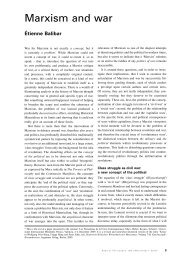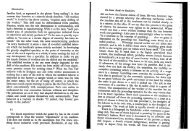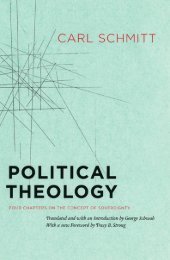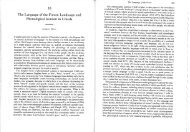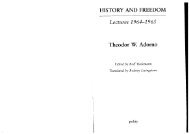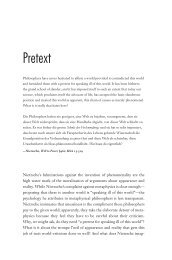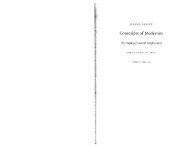Paradigms for a metaphorology.pdf - Townsend Humanities Lab
Paradigms for a metaphorology.pdf - Townsend Humanities Lab
Paradigms for a metaphorology.pdf - Townsend Humanities Lab
You also want an ePaper? Increase the reach of your titles
YUMPU automatically turns print PDFs into web optimized ePapers that Google loves.
108 <strong>Paradigms</strong> <strong>for</strong> a Metaphorology<br />
sisting on the stars’ quasi-divine special nature; this was still causing headaches <strong>for</strong><br />
Tycho Brahe when he came to interpret the ‘new star’ (Stella Nova) that appeared<br />
in Cassiopeia in 1572. This mythic status plays into the metaphor of the earth’s<br />
stellarization, which a more sober appraisal of the methodological situation would<br />
have greater cause to describe as a tellurization of the stars. After all, the assumption<br />
that the laws governing the universe are homogeneous with the stuff from<br />
which the universe is made meant that terrestrial findings could now be projected<br />
onto extraterrestrial phenomena. But the metaphor is unconcerned with theoretically<br />
verifiable problems, such as those that could be settled by sending astronauts<br />
on fact-finding missions into outer space; it wants to know ‘more’ than any space<br />
probe will ever be able to ascertain. The earth as a ‘star among stars’ is primarily a<br />
metaphysical index. Nicolaus of Cusa first made it as much in the twelfth chapter<br />
of book II of his “Docta ignorantia” [Of Learned Ignorance], where he lists the two<br />
characteristics that, <strong>for</strong> Galileo, would guarantee the earth’s stellar essence: motion<br />
and brightness (or receptivity to light). For Cusanus, it is no longer true “that this<br />
earth is the basest and lowest planet.” 23 To an observer from some other planet, the<br />
earth would appear no less luminous a body than the sun, since the fiery mantle<br />
that, <strong>for</strong> us, is hidden from view can only be seen from outside. “The earth, then,<br />
is a brilliant star having a light, heat and influence distinctively its own”—even the<br />
earth’s astrological equality, its power to shape the destiny of beings on other stars, is<br />
taken into account, as the technical term influentia suggests. 24 Precisely the illusion<br />
that we stand at the center of the universe is what first gave rise to the impression<br />
that the earth is only passively influenced by these other stars and does not exert an<br />
influence of its own: “We have no knowledge from experience of that influence,<br />
since we have no experience beyond that of our existence in the center where the<br />
influences merge.” 25 Having become one star among others, the earth <strong>for</strong>feits any<br />
special qualities that man could refer to himself and his standing in the universe.<br />
Cusanus puts an end to the earth’s relegation within the Aristotelian system of elements,<br />
but no new trait has been won in the process. For Cusanus, however, that is<br />
the decisive advance: the earth’s cosmological neutrality as a star among stars now<br />
allows man to grace this one star with the metaphysical distinction of his presence:<br />
“Rather than think that so many stars and parts of the heavens are uninhabited<br />
and that this earth of ours alone is peopled—and that with beings, perhaps, of an<br />
inferior type—we will suppose that in every region there are inhabitants, differing<br />
in nature by rank and all owing their origin to God, who is the center and circumference<br />
of all stellar regions. Now, even if inhabitants of another kind should exist<br />
23. quod terra ista sit vilissima et infima. [Nicholas of Cusa, Of Learned Ignorance, trans. Germain<br />
Heron (London: Routledge & Kegan Paul, 1954), 112.]<br />
24. Est igitur terra stella nobilis, quae lumen et calorem et influentiam habet. [Nicholas of Cusa, Of<br />
Learned Ignorance, trans. Heron, 113.]<br />
25. et cum non experiamur nos aliter quam in centro esse, in quo confluunt influentiae, de ista refluentia<br />
nihil experimur. [Nicholas of Cusa, Of Learned Ignorance, trans. Heron, 114.]



